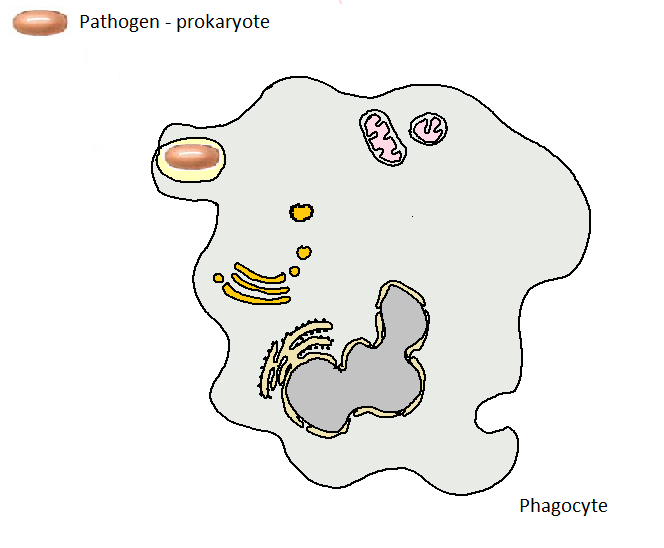Immune System
 This lesson contains two constructivist activities. In the first students research and classify microorganisms into pathogens and non pathogens. The second activity is a challenge to narrate a series of images which show the process of phagocytosis. Two short IB style questions conclude the activity.
This lesson contains two constructivist activities. In the first students research and classify microorganisms into pathogens and non pathogens. The second activity is a challenge to narrate a series of images which show the process of phagocytosis. Two short IB style questions conclude the activity.
Lesson Description
Guiding Questions
What is a pathogen?
What are the different roles of B-lymphocytes and t-lymphocytes in the immune response?
Activity 1 - Microorganisms, pathogens and antibiotics.
Research the named microorganisms on the ![]() Microorganisms activity slides below. Then classify the different microbes into the groups.
Microorganisms activity slides below. Then classify the different microbes into the groups.
Activity 2 - Outline how phagocytic leucocytes ingest pathogens
Narrate the following slides using the following terms;
Prokaryote, Eukaryote, Vesicle, Golgi apparatus, Lysosome, Endocytosis, Exocytosis, Lysis.
This is partly a revision of some of the organelles of eukaryotic cells.
Activity 3 - IB style questions on pathogens and phagocytosis
In an IB exam there would be ten minutes to answer the questions below.
1a) Explain why antibiotics are used to treat bacterial but not viral diseases.
...............................................................................................................................................
...............................................................................................................................................
...............................................................................................................................................
...............................................................................................................................................
(2 marks)
b) Describe how phagocytic leucocytes ingest pathogens
...............................................................................................................................................
...............................................................................................................................................
..............................................................................................................................................
...............................................................................................................................................
...............................................................................................................................................
...............................................................................................................................................
...............................................................................................................................................
...............................................................................................................................................
..............................................................................................................................................
(4 marks)
There is a model answer on this page: Pathogens model answer.
Teachers notes
Activity 1
The activity is a simple research and sorting task which students find interesting. Diseases and their symptoms are sometimes a bit gory. Most of the organisms are well known pathogens but there are three organisms which are not human pathogens in the list. Once an interest in finding out about diseases has been fostered, with any luck, a student will ask whether a particular micro-organism is a pathogen or not or if it is a fungus. This give a great opportunity to explain what the terms mean. This is a nice change.
The research into the effectiveness of antibiotics should illustrate that antibiotics are only effective on bacteria, not viruses.
Activity 2
Narrating a sequence of diagrams of phagocytosis is surprisingly difficult to do. The diagrams contain mitochondria rER and Golgi apparatus and it is hoped that the best students will explain how digestive enzymes are proteins made on rER and packaged into lysosomes by the Golgi apparatus.
Activity 3
There is a model answer on this page: Pathogens model answer.

 IB Docs (2) Team
IB Docs (2) Team
